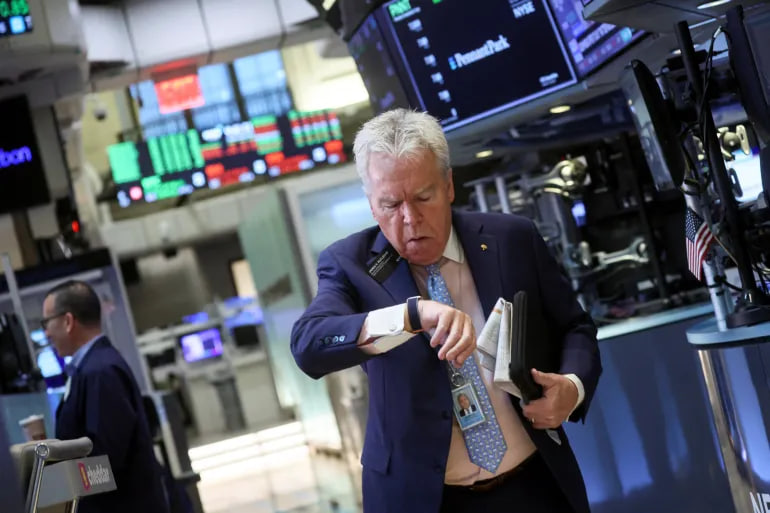Brazil's Real Rides the Rollercoaster: Navigating Currency Volatility in Emerging Markets (Meta Description: Brazil Real, Currency Volatility, Emerging Markets, Central Bank Intervention, Economic Stability, Brazilian Economy)
Imagine this: You're planning a dream vacation to Rio de Janeiro, the vibrant heart of Brazil. You've meticulously saved, booked your flights, and are excitedly counting down the days. But then, whispers of currency fluctuations reach your ears. The Brazilian Real (BRL), the currency you need, is acting erratically. Suddenly, your carefully planned budget feels like it's hanging by a thread. This is the reality for many investors and travelers alike, facing the unpredictable nature of emerging market currencies. Understanding the dynamics at play, particularly the role of central bank intervention, is crucial for navigating this volatile landscape. This isn't just about numbers on a screen; it's about securing your financial future, protecting your investments, and ensuring your hard-earned money goes further. This in-depth exploration delves into the recent events surrounding the Brazilian Real, examining the factors contributing to its fluctuations and shedding light on the intricate dance between market forces and central bank policies. We'll uncover the hidden mechanisms that drive currency movements, demystifying the complexities and equipping you with the knowledge to make informed decisions. We'll also address common concerns, providing practical strategies to mitigate risk and capitalize on opportunities in the dynamic world of emerging market finance. Get ready to unravel the mystery behind the Real's rollercoaster ride and become a more savvy investor, traveler, or simply a more informed global citizen. Let's dive in!
Central Bank Intervention: A Lifeline for the Brazilian Real?
The recent stabilization of the Brazilian Real, following a period of significant decline, provides a compelling case study in central bank intervention. On December 20th, the Brazilian Central Bank stepped in, effectively stemming the tide of losses. But what exactly does this mean? And how effective is this intervention in the long run?
Central bank intervention involves the deliberate buying or selling of a nation's currency in the foreign exchange market. In the case of Brazil, the Central Bank likely intervened by purchasing Reais, thus increasing demand and bolstering its value. This, however, is not a long-term solution. It's akin to putting a temporary band-aid on a deeper wound, addressing a symptom rather than the underlying cause of the volatility.
Think of it like this: imagine a leaky faucet. Intervention is like putting a bucket underneath to catch the drips. It prevents immediate flooding, but doesn't fix the leak itself. The true solution lies in addressing the root causes of the leak – in this case, the factors driving the Real's instability.
Underlying Factors Affecting the Real's Value
Several interconnected factors influence the value of the Brazilian Real. Let's break them down:
-
Global Economic Conditions: Global economic uncertainty, such as trade wars, rising interest rates in major economies (like the US), and geopolitical instability, can significantly impact emerging market currencies like the Real. When investors perceive global risk, they tend to move their money to safer havens, leading to capital flight from emerging markets and weakening their currencies.
-
Domestic Economic Performance: Brazil's own economic performance plays a pivotal role. Factors like inflation, interest rates, government debt, and economic growth directly influence investor confidence. Strong economic fundamentals attract foreign investment, strengthening the Real, while weak performance tends to repel it.
-
Commodity Prices: Brazil is a major exporter of commodities, particularly agricultural products and minerals. Fluctuations in global commodity prices directly impact the Real's value. High commodity prices boost export revenues, strengthening the currency, while low prices have the opposite effect. This is a classic case of how global supply and demand directly impacts a nation's currency.
-
Political Stability: Political uncertainty and instability can severely undermine investor confidence. Policy changes, political scandals, and even the mere anticipation of upcoming elections can trigger capital flight and weaken the Real.
Analyzing the December 20th Intervention
The Central Bank's intervention on December 20th suggests a concerted effort to prevent a further decline in the Real's value. This action likely aimed to:
-
Maintain Price Stability: Preventing a sharp depreciation of the Real helps keep inflation in check, as imports become more expensive with a weaker currency.
-
Boost Investor Confidence: By demonstrating a willingness to intervene, the Central Bank might reassure investors, encouraging them to hold onto their Real-denominated assets.
-
Manage External Debt: A weaker Real increases the cost of servicing Brazil's external debt, which is denominated in foreign currencies. Intervention helps mitigate this risk.
However, it's crucial to remember that this was a short-term measure. Sustained stability requires addressing the underlying economic and political factors driving the volatility.
Understanding Currency Volatility in Emerging Markets
Navigating the volatility of emerging market currencies requires a nuanced understanding of the forces at play. It's not just about reacting to daily fluctuations; it's about developing a long-term strategy that accounts for the inherent risks and opportunities.
Key Considerations:
-
Diversification: Don't put all your eggs in one basket. Diversifying your investments across different asset classes and geographies reduces your exposure to any single currency's volatility.
-
Hedging Strategies: Consider using hedging instruments, such as currency forwards or options, to protect yourself against adverse currency movements. This is especially important for businesses with international transactions.
-
Long-Term Perspective: Avoid short-term speculation. Focus on long-term investments and strategies that can weather short-term fluctuations. Remember, Rome wasn't built in a day, and neither are successful investment portfolios.
-
Stay Informed: Keep abreast of global economic news, political developments, and central bank policies that may impact the Brazilian Real or other currencies in your portfolio.
Frequently Asked Questions (FAQs)
Here are some frequently asked questions about the Brazilian Real and currency volatility:
Q1: Is the Brazilian Real a safe investment?
A1: Like any currency, the Brazilian Real carries inherent risks. Its value can fluctuate significantly due to various factors, as discussed above. Whether it's a "safe" investment depends on your risk tolerance and investment horizon.
Q2: How can I protect myself against currency fluctuations when traveling to Brazil?
A2: Consider using a credit card with good foreign transaction fees or exchanging currency only as needed. Avoid exchanging large sums at once, and research exchange rates before your trip.
Q3: What are the potential benefits of investing in the Brazilian Real?
A3: Despite the volatility, the Real can offer attractive returns, particularly during periods of strong economic growth. However, these returns come with elevated risk.
Q4: What role does the Brazilian Central Bank play in managing the Real's value?
A4: The Central Bank uses various tools, including interest rate adjustments and foreign exchange market intervention, to manage the Real's value and maintain price stability.
Q5: How do global events impact the Brazilian Real?
A5: Global events, such as trade wars, recessions, and geopolitical instability, can significantly influence investor sentiment and, consequently, the Real's value.
Q6: Are there any resources available to help me understand currency markets better?
A6: Yes! Many reputable financial news websites, economic journals, and educational resources offer insights into currency markets and investment strategies. Do your research and consult with a financial advisor if needed.
Conclusion: Navigating the Unpredictable
The Brazilian Real's recent volatility underscores the inherent uncertainty in emerging market currencies. While central bank intervention can provide temporary relief, sustained stability requires addressing the underlying economic and political factors. By understanding these factors and employing appropriate risk management strategies, investors and individuals can navigate the unpredictable nature of the Real and other emerging market currencies, maximizing opportunities while mitigating risks. Remember, knowledge is power in the world of finance, and proactive planning can help you ride out the storms and reap the rewards. So stay informed, stay vigilant, and stay ahead of the curve!



